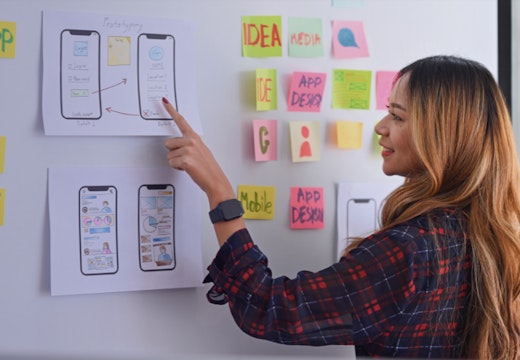How can Artificial Intelligence be used in the workplace?
Artificial Intelligence in the workplace is an exciting prospect but sometimes a confusing topic to broach. We look at how AI can be integrated into the workplace simply and straightforwardly
Recent advances in machine learning and natural language processing have transformed the Artificial Intelligence (AI) landscape. While still error-prone, language models like those employed by ChatGPT are providing an early glimpse into the transformative potential of AI. But AI already has real-world applications, especially when it comes to mobile devices. It’s being used successfully in technology like Google’s Pixel line-up (such as Tensor SoC and TPU), to power features like image processing, text-to-speech, and machine vision. It’s helping people communicate in languages they don’t speak and changing the way we live and work.
It’s no surprise then that these capabilities are starting to manifest in workplace environments — particularly when it comes to workplace apps, and the mobile experience — and helping to improve productivity, personalisation, predictive analytics, and more.
What is Artificial Intelligence?
Artificial intelligence is the ability of a computer or machine to perform tasks that would otherwise require human intelligence. Everything from problem-solving to speech recognition can be handled by AI.
Application-specific AI (narrow AI) is used is used to perform specific tasks — this is the AI that most of us are used to, a good example of them being chatbots on websites and apps. General AI (AGI), on the other hand, has the ability to perform a wide range of tasks and can adapt to new situations through the processing of experience and context — the most compelling example of this, might perhaps be Google’s PaLM, that can not only understand an entirely novel joke, but also explain why it’s funny. But while strides are being made here, we’re still very much in the early, theoretical stages of AGI.
AI adoption
Currently, 35 per cent of businesses and organizations employ narrow AI technology, while an additional 42 per cent are exploring its utility. And while the rise of AI will eliminate 85 million jobs, it will also create 97 new ones by 2025.
More relevant here, perhaps, is how it applies to mobile experiential apps. For this, AI is typically used to measure and extract insights from data, often related to traffic, booking behaviours, time of day sequencing, ordering preferences, and so on. That information is then used to improve employee experiences and streamline operations, in many ways making the on-site experience smoother. It’s crucial to note that the data is anonymized so that user privacy is preserved.
How does AI manifest in the workplace?
An excellent way to understand how AI will shape the workplace, both now and in the future, is to consider several personas and how a variety of tasks in their daily work can be enhanced by AI. Bear in mind, these are generalised and are not meant to represent any one particular professional or group.
Persona 1: Workplace Automation
Traveling back and forth between home and the office, or another remote location carries with it several new responsibilities. For example, you need to plan by booking a workspace for your big day in the office. Where else are you going to work if you don’t?
People tend to fall into a habit, and the same is true when it comes to room booking. All employees have personal preferences, including our persona, which means they might need certain amenities or features in the rooms they use. Maybe they always look for a television or digital whiteboard in the rooms they’re using. Maybe they have a favourite floor or section, or maybe they always book near colleagues, or for a certain day or time.
Whatever the case, when they open their workplace experience app, the AI knows these preferences and helps ensure they’re booking the right workstation. The system might ask ‘Would you like to book your favourite desk?’ Or, it might make suggestions on bookable spaces to help speed up and optimize the reservation process based on usage patterns, pre-defined criteria, and user behaviour.
Persona 2: Intelligent Personalisation
Imagine someone who loves coffee so much — maybe it’s you — that they stop for a java every time they leave their office. Visiting a client? Grabbing a coffee beforehand. Going on a quick break? Grabbing a coffee then too. Leaving for the day? Another pick-me-up perhaps.
Even when they’re visiting another office or building with an on-site cafe they might stop for a coffee there, and who can blame them? An AI can build behavioural patterns based on when they know a user will want coffee and direct them to the nearest one with the shortest line. It can even offer to put in the right order online, before the user reaches the coffee place, so that their wait time is minimised.
PQ: ‘An AI can build behavioural patterns based on when they know a user will want coffee…’
This is especially useful for users who may work outside of one campus. If they’re new to a place and need to get their coffee, the AI can help them pinpoint where to go without ever having to pull up a map.
Beyond coffee, an AI can help employees better understand their daily workplace routines and optimize them to be more productive. For example, an AI can send reminders for walk breaks and suggest corporate events and seminars that may be of interest to them based on their role.
Since an AI can learn each user’s habits, it can find new ways to provide useful information, reminders and insights on a daily basis, like a digital assistant. Providing one for each employee is a powerful way to keep them engaged at work, as it offers many opportunities for ongoing personal and professional growth as well as convenience and ease.
Persona 3: Predictive Workplace Analytics
Workplace analytics is one area where AI can really make a difference. One of the key things that a workplace analytics manager does is look at space utilization, desk utilization, and room usage to understand common bookings, workplace requirements, and capacities. It’s a lot to keep track of, even with digital tools for support.
The AI gathers measurements on the fly, giving managers the full utilisation rates, per hour, day, or over multiple weeks, months, and quarters. Instead of trying to extract the necessary information themselves, they can see it at a glance. Even better, AI can be used to make predictive utilisation reports, directly leveraging past data patterns and trends. Workplace managers can then use these insights to make better decisions about how to manage their campuses.
Maybe they’ll notice bookings are higher on a certain day of the week — like more people traveling to the office Tuesday through Thursday, and staying home on Mondays and Fridays. Or, maybe more desks and rooms are being booked between the hours of 10am and 3pm during the fall and winter seasons, where before there was a clear ramp up and ramp down.
Predictive analytics and AI can help determine how busy the office will be on precise days of the year, all by utilising past data, local conditions — like the weather — and other relevant information. For example, if it’s raining on a Friday afternoon on a cold fall day, you know you’re going to get fewer people coming into the office than on a sunny Friday during the summer.
As soon as it notices that attendance is down, an AI can instantly look at full day attendance metrics during rainy days in the past and make the recommendation to close down extra rooms for cleaning and maintenance. As a result, the workplace manager gains more time to focus on solving more complex and nuanced issues, since the AI can learn to look for and fix lower-hanging fruit for them.
AI In the workplace
AI elevates the workplace experience for employees by speeding up decision-making processes, but also by delivering smarter and more precise results. Better yet, it makes going to the office easier, by streamlining booking, navigation, ordering, and much more. With an AI-powered employee experience platform managing predictive analytics, workplace leaders can make better and more informed decisions about the office, year-round.








